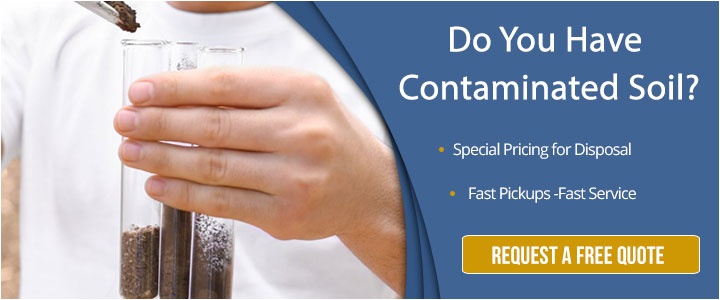Discovering soil contaminated with sewage reeks of a bad day. It can also bring your project to a halt while you deal with this unexpected setback.
In California, sewage-contaminated soil may be considered hazardous waste if it meets certain criteria outlined by the California Department of Toxic Substances Control (DTSC). According to the DTSC, hazardous waste is defined as waste that poses a substantial or potential threat to public health or the environment due to its chemical or biological nature.
Sewage-contaminated soil may be classified as hazardous waste if it contains certain levels of contaminants, such as heavy metals, pathogens or other substances that exceed regulatory thresholds. The classification may depend on factors like the source and extent of contamination, as well as the potential risks to human health and the environment.
Whether the soil is considered hazardous or not, it’s important to ensure that the contamination is controlled, treated and properly disposed of according to the law. Not doing so can put your company at risk for several costly violations and halt your project in its tracks.
How Sewage Contaminated Soil Occurs
While you may be surprised to find soil contamination at your worksite, there are several ways sewage can seep into.png?width=300&height=251&name=Subheading%20(1).png) the earth.
the earth.
Sewage contamination can occur through various pathways, including:
- Sanitary Sewer Overflows (SSOs): SSOs happen when the capacity of the sewer system is exceeded, often due to heavy rainfall, blockages or infrastructure failures. This can cause raw sewage to overflow from manholes, cleanouts or other access points, leading to contamination of nearby soil and water sources.
- Leaking Sewer Pipes: Aging or damaged sewer pipes can develop cracks, breaks or leaks, allowing sewage to seep into the surrounding soil. This can occur in both sanitary sewer lines that carry wastewater from homes and businesses, as well as in stormwater sewer systems.
- Septic System Failures: Malfunctioning or poorly maintained septic systems can release untreated sewage into the soil. Factors like system overload, inadequate maintenance or physical damage to the system components can lead to this failure.
- Illegal Discharges: Illegal dumping or discharge of sewage or wastewater into the environment can lead to contamination of soil and water bodies. This can occur from sources such as industrial facilities, illicit connections to storm drains or improper disposal practices.
- Flooding Events: During floods or heavy rainfall, sewage treatment plants may become inundated, leading to the overflow of untreated sewage into nearby areas. Floodwaters can also transport sewage from flooded homes, businesses or septic systems, spreading contamination across the landscape.
- Land Application of Biosolids: Biosolids, which are treated sewage sludge, are sometimes applied to agricultural land as a soil amendment or fertilizer. Improper application or management of biosolids can result in soil contamination with pathogens, heavy metals or other pollutants present in the sludge.
- Accidental Spills or Releases: Accidents involving transportation, storage or handling of sewage or sewage-related products can result in spills or releases that contaminate soil and nearby environments. This is why securing the transportation of your waste is important (we’ll discuss this point later in the article).
These are just some of the common ways in which sewage contamination can occur. Preventing and mitigating sewage contamination requires proper maintenance of infrastructure, adherence to regulations and best management practices, and prompt response to incidents to minimize environmental and public health impacts.
Sewage Contaminated Soil Treatment
If your project unearths sewage contaminated soil, you will likely require a detailed evaluation by environmental experts or regulatory agencies. If you're dealing with sewage-contaminated soil and are unsure about its classification, it's advisable to consult with environmental professionals or the appropriate regulatory authorities for guidance.
Once this occurs, you’ll need to either have the contaminated soil treated or disposed of at a facility that accepts this type of waste.
Treating sewage-contaminated soil typically involves several steps to remediate the contamination and restore the soil to a safe and usable condition. The specific treatment methods employed depend on factors like the extent of contamination, the types of contaminants present and site-specific conditions.
Some common techniques for treating sewage-contaminated soil include:
- Excavation and Removal: In cases where contamination is localized and soil volumes are relatively small, excavation and removal of contaminated soil may be the most effective method. The contaminated soil is excavated and transported to a licensed facility for disposal or treatment.
- Bioremediation: Bioremediation involves using microorganisms (such as bacteria or fungi) to break down organic contaminants in the soil into harmless byproducts. This can be achieved through techniques like land farming, where contaminated soil is spread out in a controlled environment and periodically tilled to promote microbial activity.
- Chemical Treatment: Chemical treatment methods involve using substances like oxidizing agents, reducing agents or pH-adjusting chemicals to neutralize or transform contaminants in the soil. For example, oxidation-reduction reactions can be used to degrade organic pollutants, while pH adjustment can help immobilize certain metals.
- Thermal Treatment: Thermal treatment methods, such as thermal desorption or incineration, involve heating contaminated soil to high temperatures to volatilize or destroy organic contaminants. This process can effectively remove a wide range of organic pollutants but may be energy-intensive and expensive.
- Soil Washing: Soil washing involves washing contaminated soil with water or other solvents to remove soluble contaminants and separate them from the soil particles. The contaminated wash water is then treated separately, and the cleaned soil can be returned to the site or disposed of appropriately.
- Solidification/Stabilization: Solidification/stabilization techniques involve mixing contaminated soil with additives (such as cement, lime or fly ash) to encapsulate or immobilize contaminants and reduce their mobility. This can help prevent the spread of contamination and improve the soil's stability.
- Phytoremediation: Phytoremediation utilizes plants to uptake, accumulate or degrade contaminants in the soil. Certain plant species have the ability to absorb or break down pollutants through their root systems or metabolic processes, thereby reducing contamination levels in the soil.
- In-situ Treatment: In-situ treatment methods involve treating contaminated soil without excavating it from the site. Techniques like soil vapor extraction, bioventing, or injection of chemical or biological amendments into the soil can be used to remediate contamination.
These treatment methods can be used alone or in combination, depending on site-specific conditions and project objectives. The selection of an appropriate treatment approach should consider factors like effectiveness, cost, regulatory requirements and potential impacts on the environment and surrounding communities.
Oversight by environmental professionals and regulatory agencies is often necessary to ensure that treatment activities are conducted safely and effectively as well.
Why Transportation Is Critical During Disposal
Considering how the soil is transported for treatment or disposal is crucial for several reasons. If you discover sewage contaminated soil or are responsible for the contamination itself, you are responsible for that waste from the moment it is generated (or discovered) to the moment it is properly disposed of.
contaminated soil or are responsible for the contamination itself, you are responsible for that waste from the moment it is generated (or discovered) to the moment it is properly disposed of.
Even if you do everything by the book during the treatment or removal of the soil, if it requires transport to a facility, you must ensure that it arrives there safely.
Contaminated soil may contain hazardous substances that can pose risks to human health and the environment. Proper transportation methods, like covering and securing the soil during transit, help prevent the spread of contamination to surrounding areas. This is especially important when transporting soil through populated areas or sensitive ecosystems.
During transportation, there is also a risk of accidents or spills that could result in the release of contaminated soil onto roadways, waterways or other environments. Ensuring that soil is transported using appropriate containers, vehicles and handling procedures helps minimize the likelihood of accidental releases and associated environmental impacts.
That’s why reputable hazardous waste disposal companies play an important role. Whether the soil you are transporting is hazardous or non-hazardous, these companies get the loads to their final destinations safely and keep you in compliance with regulations. Transport companies also help you:
- Protect workers and public safety
- Optimize efficiency and cost-effectiveness in the process
- Maintain stakeholder confidence in your project
- Reduce your environmental footprint
By implementing appropriate transportation practices, the potential negative impacts associated with the movement of contaminated soil can be minimized, while achieving effective and responsible soil management outcomes.
What A Top Disposal Company Offers
Choosing a top disposal company for this important task is important. You don’t want to settle for the cheapest company or a business you randomly pick off the internet. The top companies will not only be licensed and insured to do business in California but have a stellar reputation and offer the services you need to complete the job. These services include:
- Waste collection
- Waste transportation
- Help with the required paperwork, including manifests
- Emergency response
- Consulting services
- Compliance and regulatory support
- Monitored facilities to keep loads secure
- Excellent customer service
Make sure you ask for references and seek out reviews and testimonials from past clients to gauge their satisfaction with the disposal company’s services. Positive reviews and recommendations can also provide valuable insights into the company’s reliability, professionalism and customer satisfaction.
The top partners will also leverage their expertise, technology and best practices to provide reliable and sustainable waste management solutions for your industry and community.


Comment